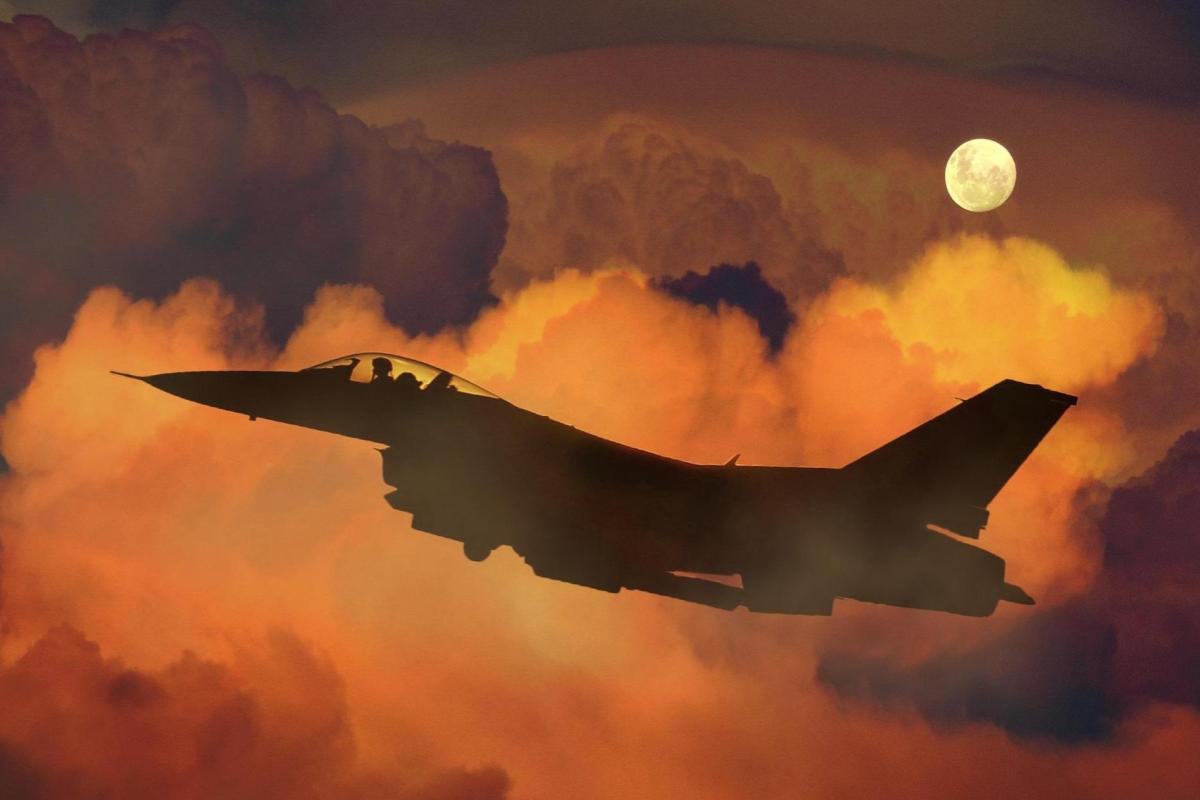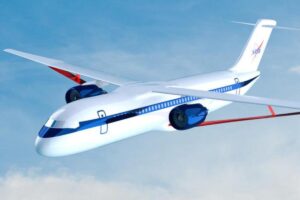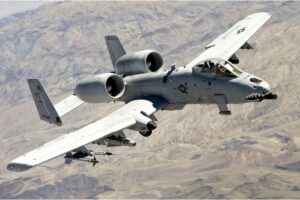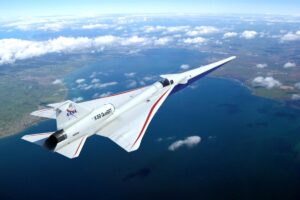RS-422 to 1553 Simplifying Avionics Integration
Executive Summary
Modern avionics systems require seamless data communication between subsystems that may have been developed decades apart or for entirely different mission requirements. One of the most common integration challenges involves connecting RS-422 serial interfaces with the MIL-STD-1553 bus, a protocol known for its reliability in military and aerospace applications.
RS-422 to 1553 protocol converters offer a streamlined, cost-effective way to bridge these two protocols, enabling interoperability without needing extensive system redesign. This white paper explores how such converters facilitate integration, the technical hurdles they overcome, and how they support mission-critical functions in defense, space, and commercial aviation environments.
Chapter 1: Introduction to Avionics Integration Challenges
1.1 The Diversity of Avionics Protocols
Avionics systems are rarely homogenous. Aircraft and spacecraft typically feature subsystems developed at different times, using varied communication protocols. This mix arises from:
-
Technology updates across mission lifecycles
-
Vendor-specific solutions
-
Legacy equipment still in active service
-
The adoption of commercial off-the-shelf (COTS) components
One common pairing seen in integration efforts is RS-422, a differential serial communication standard, and MIL-STD-1553, a military-grade, command/response time-division multiplexed data bus.
1.2 RS-422 and MIL-STD-1553: Incompatibility in Practice
Despite both being robust communication standards, RS-422 and MIL-STD-1553 differ significantly:
-
RS-422 is a simplex or duplex point-to-point protocol.
-
MIL-STD-1553 is a redundant command/response bus with deterministic timing.
Direct communication between these systems is not possible without a translator, or protocol converter, capable of managing electrical, logical, and software-level differences.
Chapter 2: Overview of RS-422
2.1 RS-422 Fundamentals
RS-422 (Recommended Standard 422) was introduced by the Electronics Industries Association (EIA) as a balanced differential signal interface. It is commonly used in:
-
Navigation and attitude sensors
-
Cockpit instrumentation
-
Serial control devices
-
Aerospace-grade data recorders
2.2 Key Characteristics
-
Differential signaling for noise immunity
-
Unidirectional or full-duplex operation
-
Supports higher data rates over long distances
-
Low EMI emissions
2.3 Use in Aerospace Systems
RS-422 is favored for sensor and instrumentation data because of its:
-
Simplicity and reliability
-
Point-to-point structure
-
Compact form factor
-
Cost-effectiveness
However, it lacks a standard data format, error correction, or bus management, making it unsuitable for mission-critical bus applications like MIL-STD-1553.
Chapter 3: Overview of MIL-STD-1553
3.1 MIL-STD-1553 Defined
MIL-STD-1553 is a digital time-division multiplexing protocol defined by the U.S. Department of Defense. It is the backbone for data communications in:
-
Combat aircraft
-
Unmanned aerial systems (UAS)
-
Spacecraft and launch vehicles
-
Surface vessels and armored platforms
3.2 Key Features
-
Dual-redundant transformer-coupled bus
-
Deterministic command/response structure
-
Standard 1 Mbps data rate
-
Fixed word structure: Command, Data, Status
-
High reliability under extreme conditions
3.3 Role in Mission-Critical Systems
Unlike RS-422, MIL-STD-1553 guarantees bus arbitration, fault tolerance, and message timing, making it essential for flight control, weapons systems, and inter-system communication.
Chapter 4: Why Convert RS-422 to 1553?
4.1 Supporting Legacy Systems
Many sensors and control units in active service today rely on RS-422 interfaces. Rather than replacing these components, system integrators often prefer using converters to bridge RS-422 with 1553-compliant avionics.
4.2 Hybrid Platforms
Dual-role platforms that combine commercial and defense-grade systems often require this conversion. For example:
-
Commercial-grade data loggers feeding into military avionics
-
Civilian navigation receivers adapted for UAVs
-
Ground control systems interfacing with 1553-based airborne electronics
4.3 Test and Evaluation
During avionics validation, test rigs often use RS-422 signal emulators. To test with actual MIL-STD-1553 systems, real-time conversion ensures compatibility and accurate simulation.
Chapter 5: Technical Challenges of Conversion
5.1 Electrical Compatibility
RS-422 and 1553 use different signal levels and transmission modes:
-
RS-422: Differential, unidirectional point-to-point
-
1553: Transformer-coupled, bidirectional shared bus
The converter must:
-
Isolate electrical domains
-
Manage signal buffering and directionality
-
Provide impedance matching
5.2 Protocol Translation
Data from RS-422 may be transmitted asynchronously, without inherent structure. In contrast, MIL-STD-1553 is highly structured. Challenges include:
-
Defining message boundaries
-
Mapping data to 1553 subaddresses
-
Emulating Bus Controller or Remote Terminal behavior
5.3 Timing and Synchronization
RS-422 does not use a common clock, and message timing is non-deterministic. MIL-STD-1553 requires strict adherence to timing. The converter must:
-
Buffer RS-422 data streams
-
Frame data for inclusion in 1553 messages
-
Emulate deterministic behavior expected on the 1553 bus
Chapter 6: RS-422 to 1553 Converter Architecture
6.1 Hardware Components
A typical converter includes:
-
RS-422 line receivers and drivers
-
MIL-STD-1553 transceivers with transformers
-
A central processing unit or FPGA
-
Flash and SRAM for data buffering
-
Power regulation for aerospace environments
6.2 Software and Firmware Functions
The embedded software performs:
-
Input parsing and filtering
-
Protocol emulation (e.g., RT or BC roles)
-
Timing control and message scheduling
-
Status reporting and diagnostics
6.3 Configuration and Interfaces
Many converters support:
-
GUI-based configuration tools
-
Serial or Ethernet ports for setup
-
Logging and debugging options
-
Remote firmware updates
Chapter 7: Implementation Examples
7.1 Integrating an RS-422 IMU in Military Aircraft
A defense aircraft upgrade program involved integrating a commercial off-the-shelf (COTS) inertial measurement unit (IMU) using RS-422. Instead of redesigning the navigation subsystem, a converter allowed the IMU to transmit data to the flight computer over MIL-STD-1553.
7.2 Satellite Subsystem Adaptation
A weather satellite used RS-422 telemetry for its payload controller. The onboard avionics used MIL-STD-1553. Engineers implemented a converter to interface the controller with mission-critical bus commands without hardware modification.
7.3 Flight Simulator Integration
A flight simulation lab needed to emulate RS-422 data streams and inject them into a real 1553 bus for system training and fault testing. The use of converters enabled smooth interoperability.
Chapter 8: Certification and Environmental Compliance
8.1 Environmental Standards
Converters used in flight or space must meet:
-
MIL-STD-810: Shock, vibration, temperature
-
DO-160G: Environmental testing for airborne equipment
-
MIL-STD-704: Electrical power compatibility
8.2 EMI and Signal Integrity
-
MIL-STD-461 compliance ensures converters minimize emissions and resist interference.
-
Differential signaling must be shielded and filtered for integrity in high-noise environments.
8.3 Software Safety and Traceability
When converters are part of critical systems:
-
DO-178C applies to firmware controlling the conversion logic.
-
DO-254 ensures reliability of hardware components.
-
Design documentation must demonstrate fail-safety and deterministic performance.
Chapter 9: Key Vendors and Market Overview
9.1 Leading Manufacturers
Several suppliers specialize in RS-422 to MIL-STD-1553 converters:
-
Alta Data Technologies
-
Data Device Corporation (DDC)
-
AIM GmbH
-
Astronics Test Systems
-
Excalibur Systems
These companies offer both embedded modules and standalone converters with extensive configurability.
9.2 Custom vs. COTS
While COTS solutions address most needs, mission-specific converters can be built to meet:
-
Radiation-hardening for space
-
Miniaturization for UAVs
-
Custom connector requirements
-
Specific message filtering and prioritization logic
Chapter 10: Deployment Guidelines
10.1 Define Interface Characteristics
Before selecting a converter:
-
Identify RS-422 parameters (baud rate, message structure)
-
Determine MIL-STD-1553 requirements (Bus Controller vs RT)
-
Define data flow direction (uni/bidirectional)
10.2 Perform System-Level Integration Testing
Validate:
-
Protocol compatibility
-
Timing and synchronization
-
Fault tolerance and edge cases
-
Converter performance under load
10.3 Plan for Lifecycle Management
Choose products that support:
-
Firmware updates
-
Long-term availability
-
Rugged construction
-
Secure boot and diagnostic monitoring
Chapter 11: Benefits of RS-422 to 1553 Converters
11.1 Cost Efficiency
Replacing RS-422-based legacy devices is costly. Converters allow reuse without impacting existing 1553 networks.
11.2 Simplified Upgrades
Integrators can introduce new functionality incrementally—especially in platforms constrained by certification or mission schedule.
11.3 Modularity
Converters support modularity and open systems architectures (MOSA), encouraging decoupling of software and hardware lifecycles.
11.4 Shorter Time to Deployment
Proven, off-the-shelf converter solutions reduce design time and simplify testing, especially with pre-certified modules.
Chapter 12: Future Trends
12.1 Intelligent Protocol Bridges
New converters are integrating microcontrollers and AI for:
-
Dynamic traffic management
-
Predictive failure detection
-
Context-aware routing and prioritization
12.2 Unified Gateway Devices
Vendors are developing converters that support RS-232/422/485 to 1553, ARINC-429, and Ethernet in a single enclosure for multi-protocol interoperability.
12.3 Cybersecurity Enhancements
With growing security concerns in aerospace, modern converters include:
-
Encryption engines
-
Access control lists
-
Secure data tunnels between RS-422 and 1553 domains
Conclusion
In the quest to modernize and extend the functionality of airborne and spaceborne platforms, RS-422 to MIL-STD-1553 protocol converters have emerged as a key enabler of interoperability. By translating between a flexible, low-level serial standard and a mission-critical, deterministic bus system, these converters support integration without the need for complete subsystem overhauls.
From fighter jets and UAVs to satellites and simulation labs, the demand for robust, low-latency protocol translation continues to grow. Whether you are supporting legacy sensors or introducing COTS innovation into defense-grade systems, RS-422 to 1553 converters offer the performance, reliability, and configurability required for success in complex aerospace environments.





